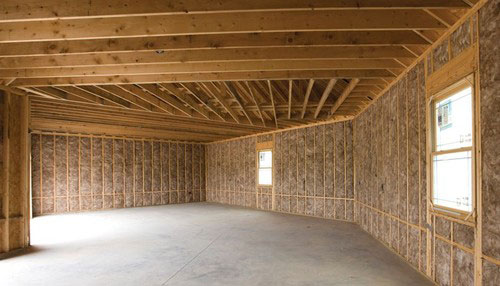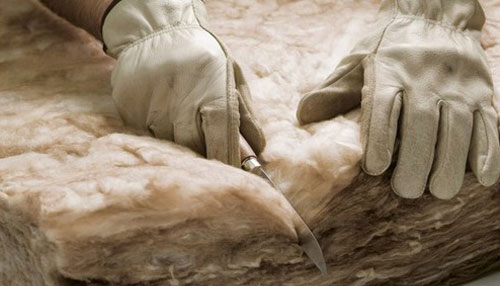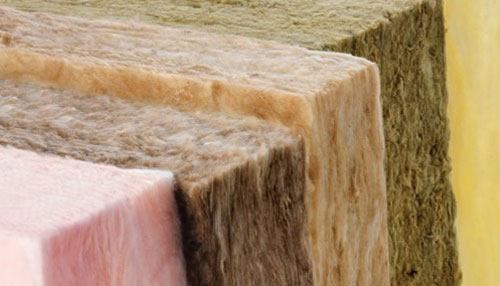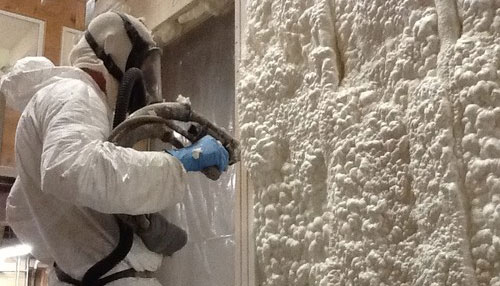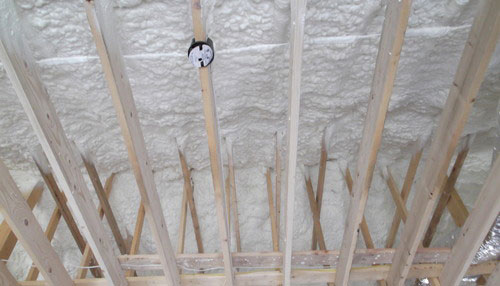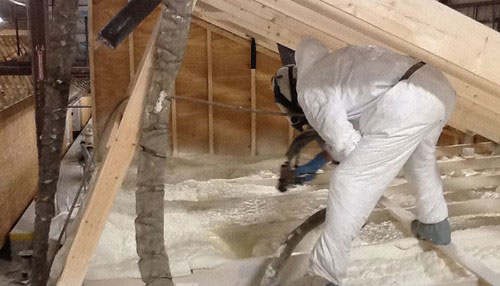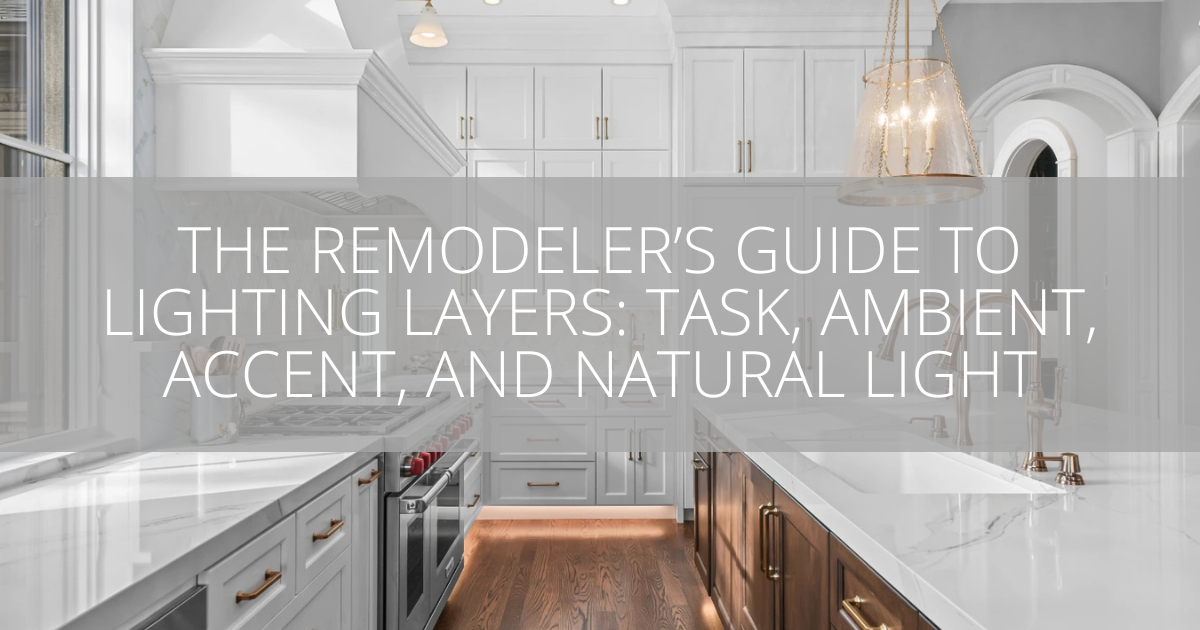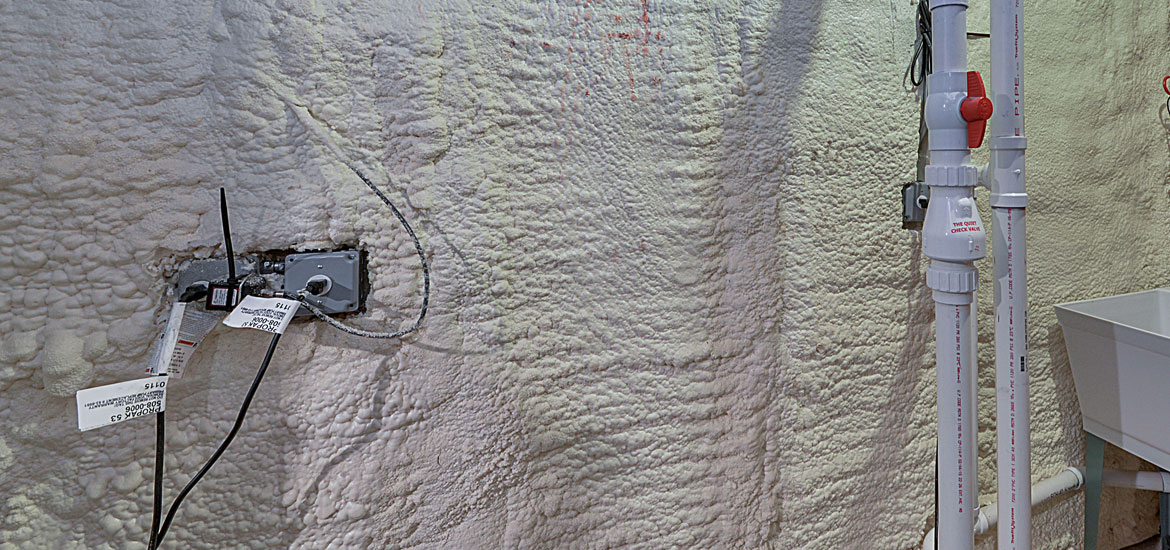
Many homeowners realize that insulation is a must to keeping our homes comfortable and energy-efficient. There are many questions that come to mind. How do we safely remove old insulation? Also, when insulating a home, the decision between spray foam and fiberglass can be difficult; but what is the difference between the two types? Hopefully, this blog can help clear up some of these questions.
Safely Removing Old Insulation
You’ll need to make sure that the insulation you are removing does not contain traces of asbestos. This is very important if your home includes a product manufactured between 1930 and 1950. Do not try to remove any insulation until you are sure. Purchasing a testing kit from a home improvement store or contacting an inspector is highly recommended. You must make sure all samples of the insulation are sent them to a lab for testing. If by chance asbestos is present, you will have to hire professional to remove the insulation and ensure it is disposed of properly.
To remove blown insulation, you need to make sure you have a large capacity shop vacuum. You can also rent specialized HEPA-filter insulation removal equipment from an equipment rental facility. Because it’s loose, blown insulation has the tendency to be messy and hard to contain. Tiny airborne particles from this type of insulation can lead to respiratory problems. Make sure you also have the right protective clothing and a good mask or respirator before you start. You also want to use large rolls of plastic sheeting and tape off areas of your home to contain any particles.
Related: When to DIY Versus Hiring a Professional Contractor
Which Type of Insulation Do I Need?
This is an age-old question, really, the question of which type of insulation a homeowner should be using. There are a few things that we know for sure when it comes to insulation, one of which is that insulation keeps a home’s temperature acceptable, but it also ensures that a home is able to conserve energy and thereby cut down on the electric bill. When it comes to insulation, especially in the case of a residential home there are two major types: spray foam and fiberglass.
Fiberglass – This type of insulation traps air bubbles and creates an insulation effect that escalates, slowing heat exchange between surfaces.
Spray Foam ¬– This is a polymer that expands to nearly 100 times its original volume, and then hardens into a solid. This allows for much more coverage and is more of an automated process than fiberglass.
A Look at Spray Foam Insulation
If an individual is considering spray foam insulation then they have two basic choices to look at: Open Cell, and Closed Cell.
Open Cell Insulation
With open cells, the cells are broken and air will actually fill the gaps that they leave. That being the case, it is much softer and much less structurally sounds than closed cell insulation. While this might sound a bit ineffective, consider that it is much less expensive, and if you are in a location where considerable stress will not be placed on the walls, then it might be perfectly acceptable to use this type of foam insulation.
Closed Cell Insulation
Open cell insulation is a bit limited in insulation range, but closed cell insulation can have varying ranges. The unit of measurement is examined through the weighting of one cubic foot, and then it can vary between 0.4lb and 0.5lb. The R-value is measured at a factor of 3.5 per inch, so this ultimately depends on the density. In closed cell, the density may be as high as 1.7 to 2.0lbs per cubic foot, and higher density allows for more uses.
Pros and Cons
There are pros and cons to consider with each type of insulation.
Take fiberglass, for example. It’s cheaper, no doubt about that, but there is also the fact that 30% of air escapes from it. This number will increase if it is improperly installed.
Spray foam is much more expensive, which is a clear con, but it does fill up more space, and it does conform to the space in which it is in. On the negative side, however, it needs to be installed by a professional every time, which is going to raise the cost.
Understanding R-Value
When one is looking at both types of insulation, the R-value is something that they will need to consider, but what is it, exactly? The R-value is a measurement of how resistant the product is to heat flow, the higher the R-value, the more heat will be prevented from transitioning through the insulation. If you are dealing with a residential home, then, most likely, you will be attempting to reach an R-value of 38, meaning with the R-value of spray foam being about 6 per square inch, it will require 6.3 inches to reach the R-38 designation. With fiberglass, you would need considerably more, which ultimately leads to more work.
Recommended Home Insulation R– Values may be helpful when making any changes to your home’s insulation needs.
The choice between these two types of insulations ultimately hinges on factors like:
- The Size of the Project
- The Budget
- Owner Preference
- Climate
- Environmental Factors
Ultimately, the decision will be for the homeowner to make with the input of their installation professional. Budget constraints must be taken into account, but if at all possible it is strongly recommended that homeowners stick to the spray foam as it offers more coverage and better results. It can be a tough call, but one that must be made.

